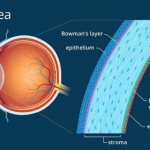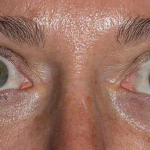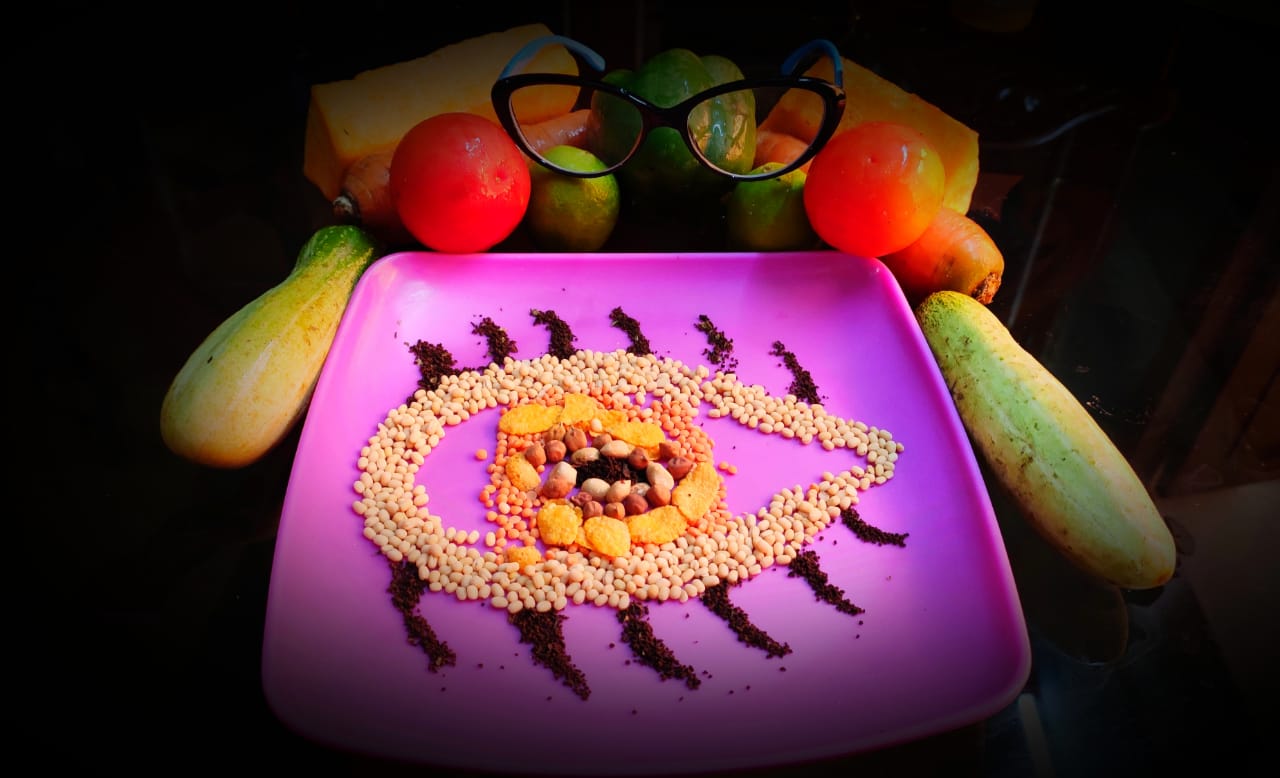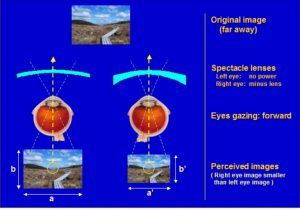Dry eye is a common condition where your eyes feel dry, gritty, or irritated because they don’t make enough tears or the tears evaporate too fast. Nutrition can play a big role in managing dry eye by supporting tear production, reducing inflammation, and keeping your eyes healthy.
Drinking enough water is essential for tear production. If you’re dehydrated, your body struggles to make tears, worsening dry eye symptoms. Aim for 8-10 glasses of water daily, more if you’re active or live in a dry climate. Foods with high water content, like cucumbers, watermelon, celery, and oranges, also help keep you hydrated. Try to limit caffeine (like coffee or soda) and alcohol, as they can
dehydrate you, making your eyes feel drier. Vitamin A keeps the outer layer of your eyes (the cornea) healthy and supports tear production. A deficiency can lead to dry, uncomfortable eyes. You can get vitamin A from colorful foods like carrots, sweet potatoes, spinach, kale, and pumpkins, which contain beta-carotene that your body converts into vitamin A. Eating 1-2 cups of these vegetables daily, whether steamed, roasted, or in a smoothie, can help maintain eye moisture.
Omega-3 fatty acids are healthy fats that help reduce inflammation, a key factor in dry eye. They improve the quality of the oily layer in your tears, which stops them from evaporating quickly. You can find omega-3s in fatty fish like salmon, mackerel, tuna, and sardines, as well as plant-based sources like flaxseeds, chia seeds, walnuts, and hemp seeds. Studies suggest that omega-3s can soothe eye irritation and boost tear production. Aim for 2-3 servings of fatty fish per week (about 4-6 ounces each) or a tablespoon of ground flaxseeds daily
Low vitamin D levels are linked to worse dry eye symptoms because this vitamin helps control inflammation. You can get vitamin D from sunlight (10-30 minutes a few times a week, depending on your skin and location), foods like fortified milk, orang juice, or fatty fish, and egg yolks. If you live in a place with limited sunlight or don’t get enough from food, a vitamin D supplement might help. Antioxidants like vitamins C and E protect your eyes from damage caused by stress pollution, or blue light, which can worsen dry eye. Vitamin C is found in citrus fruits
(oranges, grapefruits), strawberries, bell peppers, and broccoli. Vitamin E is in almonds, sunflower seeds, avocados, and spinach. Eating a handful of nuts or a citrus fruit daily can give your eyes an antioxidant boost, reducing irritation and supporting overall eye health. Foods to Avoid
Some foods can make dry eye worse. Sugary snacks, processed foods (like chips or fast food), and high-sodium meals can increase inflammation or dehydrate you. Too much salt, for instance, pulls water from your body, including your eyes. Try to cut back on these and focus on whole foods like fruits, vegetables, lean proteins. To manage dry eye with nutrition, plan meals with omega-3s (like salmon or chia seeds), colorful veggies, and hydrating foods. Snack on nuts or fruit instead of chips. Keep a water bottle handy to sip all day. If you’re considering supplements, talk to a
healthcare provider to ensure they’re safe for you. Pair these diet changes with habits like taking breaks from screens, using a humidifier, and wearing sunglasses to protect your eyes from wind or dust. By eating a balanced diet rich in omega-3s, vitamins A, D, C, and E, and staying hydrated, you can support tear production, reduce inflammation, and ease dry eye symptoms. Small, consistent changes can g a long way in keeping your eyes comfortable and healthy.










